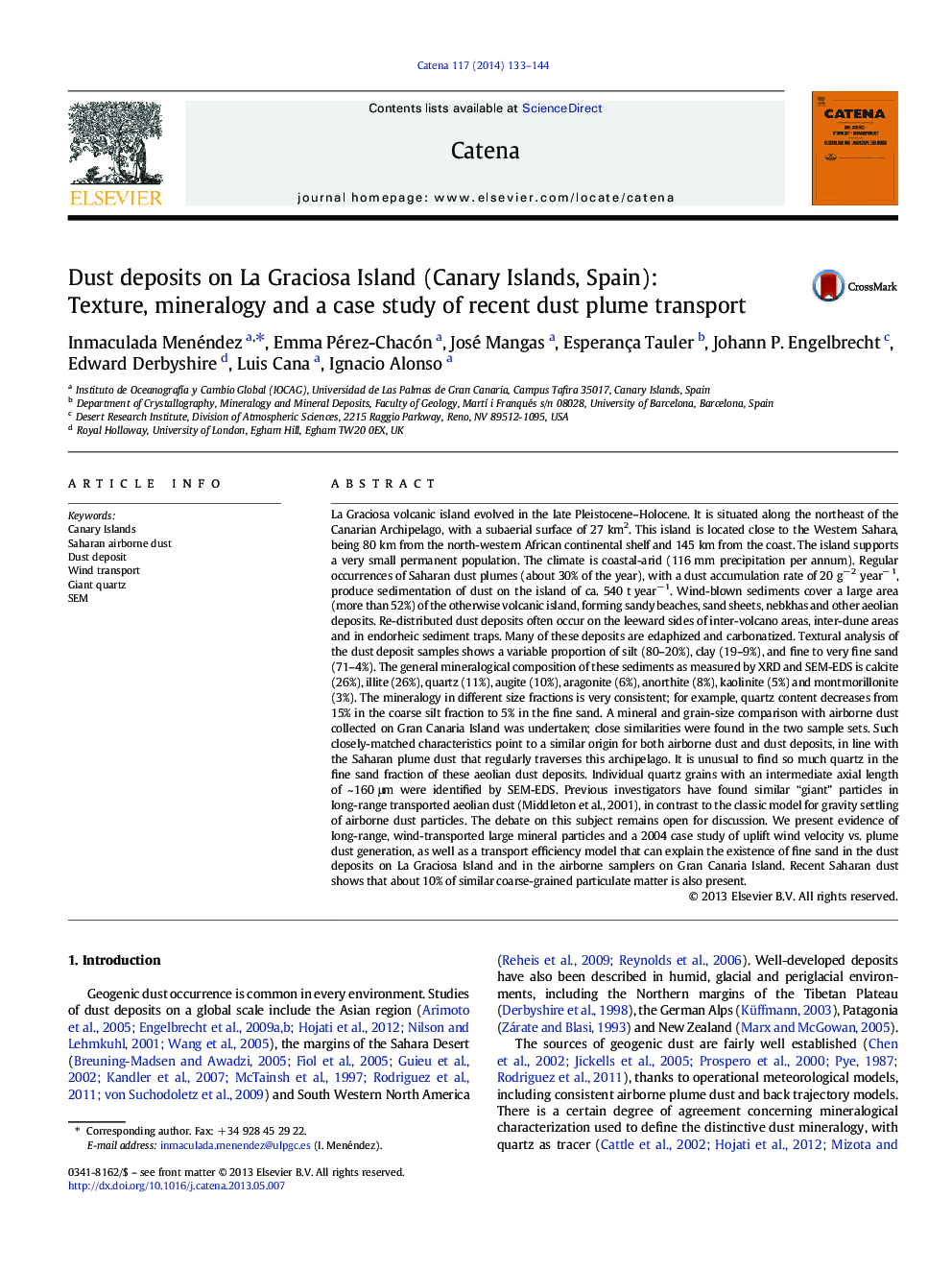| کد مقاله | کد نشریه | سال انتشار | مقاله انگلیسی | نسخه تمام متن |
|---|---|---|---|---|
| 6408069 | 1629235 | 2014 | 12 صفحه PDF | دانلود رایگان |
- Saharan airborne dust is the source of the dust deposits found on the Canary Islands.
- Saharan plume dust transport particles are coarser than 150 μm.
- Giant aeolian quartz is found in dust deposits on La Graciosa Island.
La Graciosa volcanic island evolved in the late Pleistocene-Holocene. It is situated along the northeast of the Canarian Archipelago, with a subaerial surface of 27 km2. This island is located close to the Western Sahara, being 80 km from the north-western African continental shelf and 145 km from the coast. The island supports a very small permanent population. The climate is coastal-arid (116 mm precipitation per annum). Regular occurrences of Saharan dust plumes (about 30% of the year), with a dust accumulation rate of 20 gâ 2 yearâ 1, produce sedimentation of dust on the island of ca. 540 t yearâ 1. Wind-blown sediments cover a large area (more than 52%) of the otherwise volcanic island, forming sandy beaches, sand sheets, nebkhas and other aeolian deposits. Re-distributed dust deposits often occur on the leeward sides of inter-volcano areas, inter-dune areas and in endorheic sediment traps. Many of these deposits are edaphized and carbonatized. Textural analysis of the dust deposit samples shows a variable proportion of silt (80-20%), clay (19-9%), and fine to very fine sand (71-4%). The general mineralogical composition of these sediments as measured by XRD and SEM-EDS is calcite (26%), illite (26%), quartz (11%), augite (10%), aragonite (6%), anorthite (8%), kaolinite (5%) and montmorillonite (3%). The mineralogy in different size fractions is very consistent; for example, quartz content decreases from 15% in the coarse silt fraction to 5% in the fine sand. A mineral and grain-size comparison with airborne dust collected on Gran Canaria Island was undertaken; close similarities were found in the two sample sets. Such closely-matched characteristics point to a similar origin for both airborne dust and dust deposits, in line with the Saharan plume dust that regularly traverses this archipelago. It is unusual to find so much quartz in the fine sand fraction of these aeolian dust deposits. Individual quartz grains with an intermediate axial length of ~ 160 μm were identified by SEM-EDS. Previous investigators have found similar “giant” particles in long-range transported aeolian dust (Middleton et al., 2001), in contrast to the classic model for gravity settling of airborne dust particles. The debate on this subject remains open for discussion. We present evidence of long-range, wind-transported large mineral particles and a 2004 case study of uplift wind velocity vs. plume dust generation, as well as a transport efficiency model that can explain the existence of fine sand in the dust deposits on La Graciosa Island and in the airborne samplers on Gran Canaria Island. Recent Saharan dust shows that about 10% of similar coarse-grained particulate matter is also present.
Journal: CATENA - Volume 117, June 2014, Pages 133-144
